

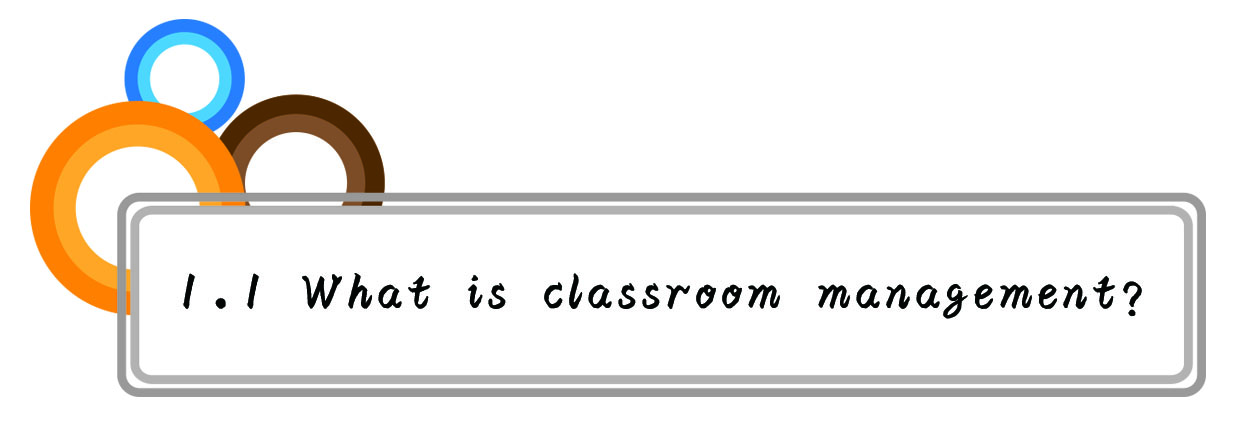
Classroom management is typically associated with teachers’ management of student behavior. The goal of classroom management is the creation of conditions for students to work and listen to their teacher. The idea of “classroom management” simply as a set of discipline and control strategies to make this happen is outmoded and ultimately unhelpful if we see managing classrooms as an unfolding set of practices that are intimately tied in with pedagogy.
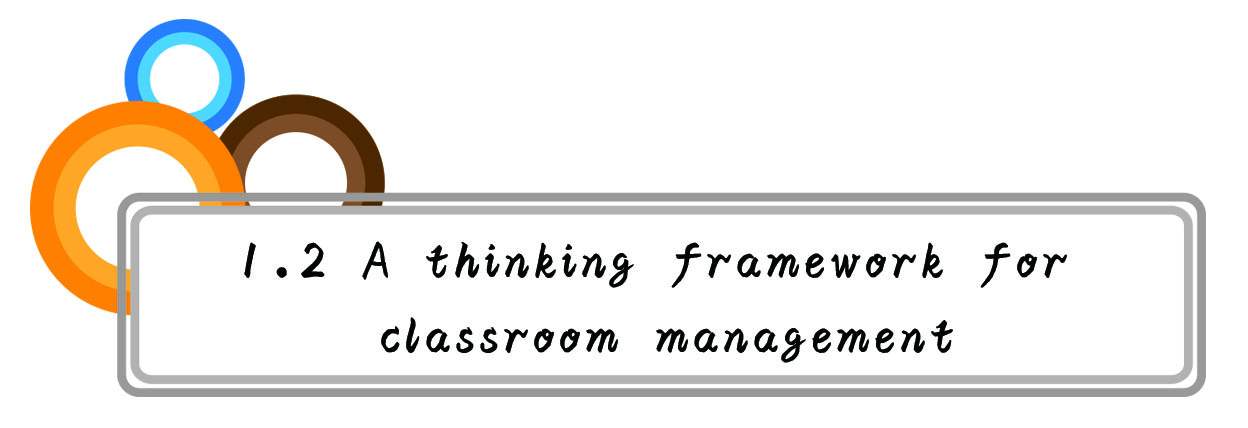
There are four linked elements in a thinking framework for classroom management:
Time: classroom groups spend together;
Space: the location of learning and teaching;
Engagement: the practices of managing the emotional domain;
Participation: the utilization of learning opportunity.
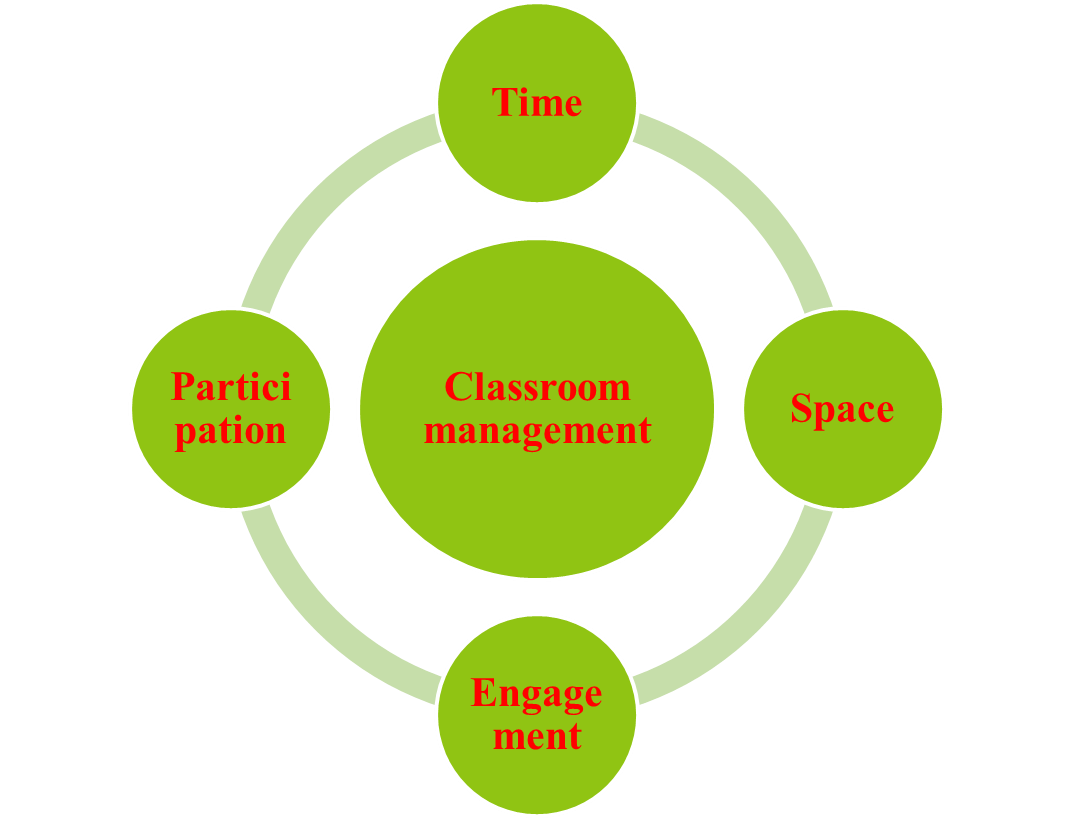
Fig. 14-1: A thinking framework for classroom management

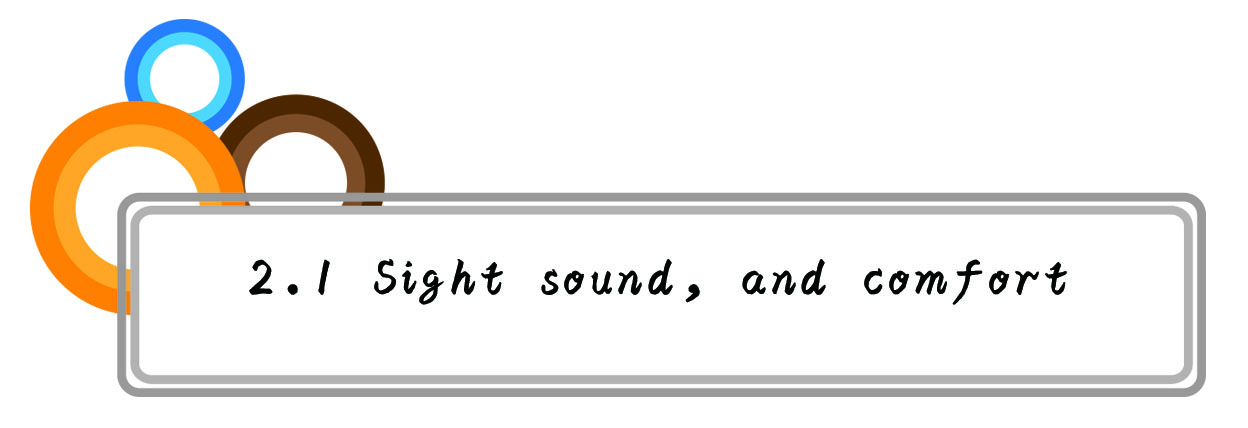
Ss are indeed profoundly affected by what they see, hear, and feel when they enter the classroom.
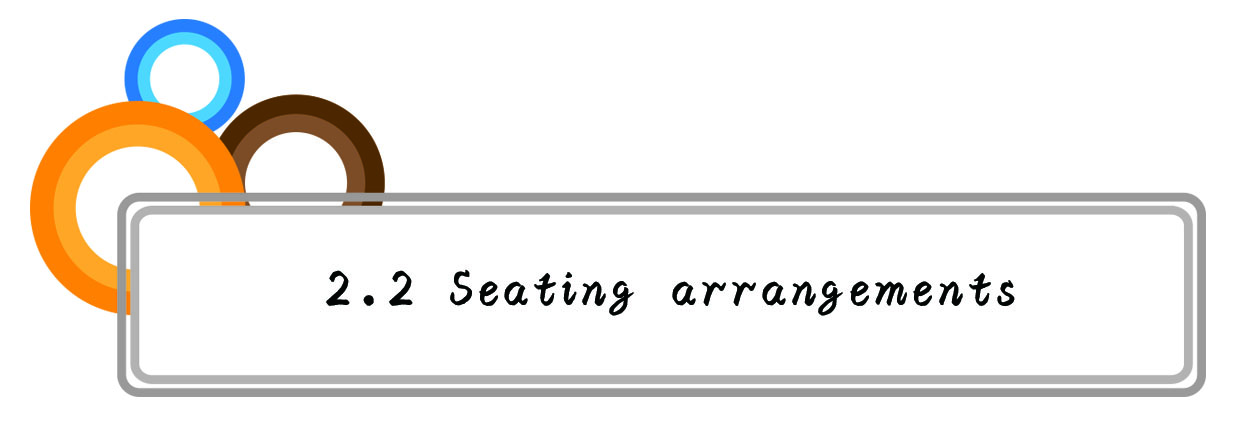
If your classroom has movable desk-chairs, consider patterns of semicircles, U-shapes, concentric circles, or –if your class size is small enough—one circle so that students aren’t all squarely facing the teacher.
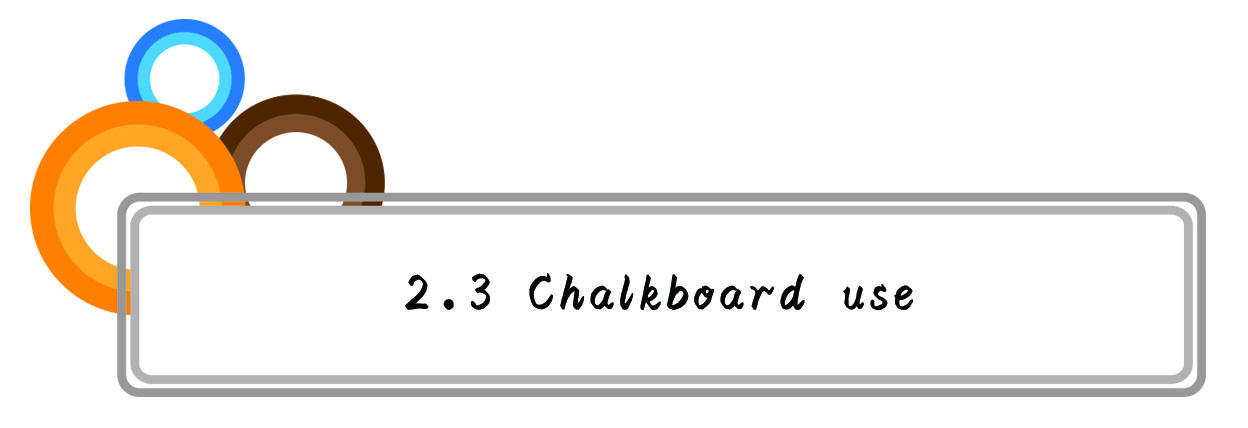
The chalkboard is one of your greatest allies. It gives students added visual input along with auditory. It allows you to illustrate with words and pictures and graphs and charts. It is recyclable!

Make sure that the equipment fits comfortably in the room; you try out the machine ahead of time to ascertain that it actually works and you know how to operate it.
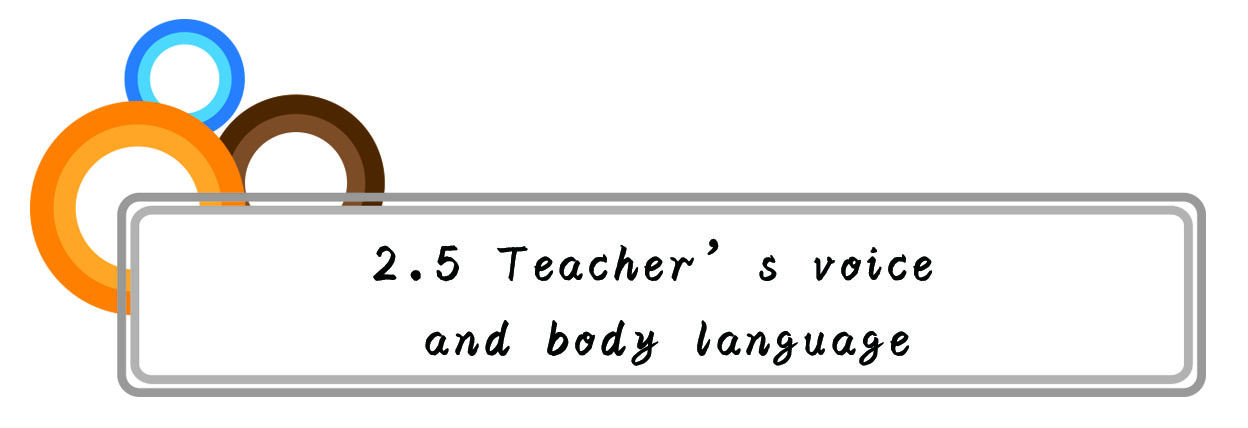
You do not have to have a loud, booming voice, but you need to be heard by all the students in the room. Nonverbal messages are very powerful. Here are some pointers:
(1) Let your body posture exhibit an air of confidence.
(2) Your face should reflect optimism, brightness, and warmth.
(3) Use facial and hand gestures to enhance meanings of words and sentences that might otherwise be unclear.
(4) Make frequent eye contact with all students in the class.
(5) Do not “bury yourself” in your notes and plans.
(6) Do not plant your feet firmly in one place for the whole hour.
(7) Move around the classroom, but not to distraction.
(8) Follow the conventional rules of proxemics (distance) and kinesthetic (touching) that apply for the culture(s) of your students.
(9)Dress appropriately, considering the expectations of your students and the culture in which you are teaching.
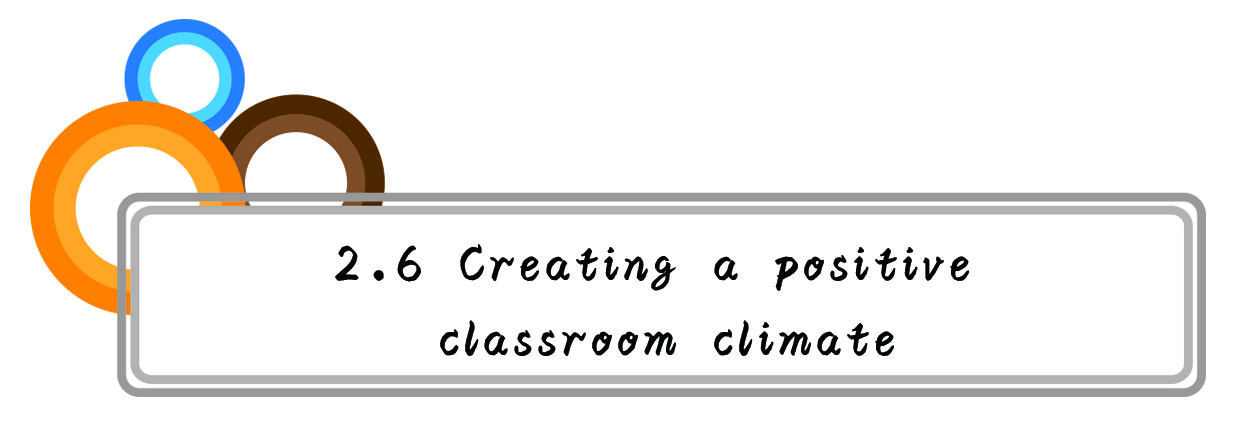
(1) Establishing rapport. Rapport is the relationship or connection you establish with your Ss, a relationship built on trust and respect that leads to Ss’ feeling capable, competent, and creative.
(2) Balancing praise and criticism. Genuine praise, appropriately delivered, enables Ss to welcome criticism and to put it to use.
(3) Generating energy. Energy drives Ss toward higher attainment. Ss take energy with them when they leave the classroom and bring it back the next day.

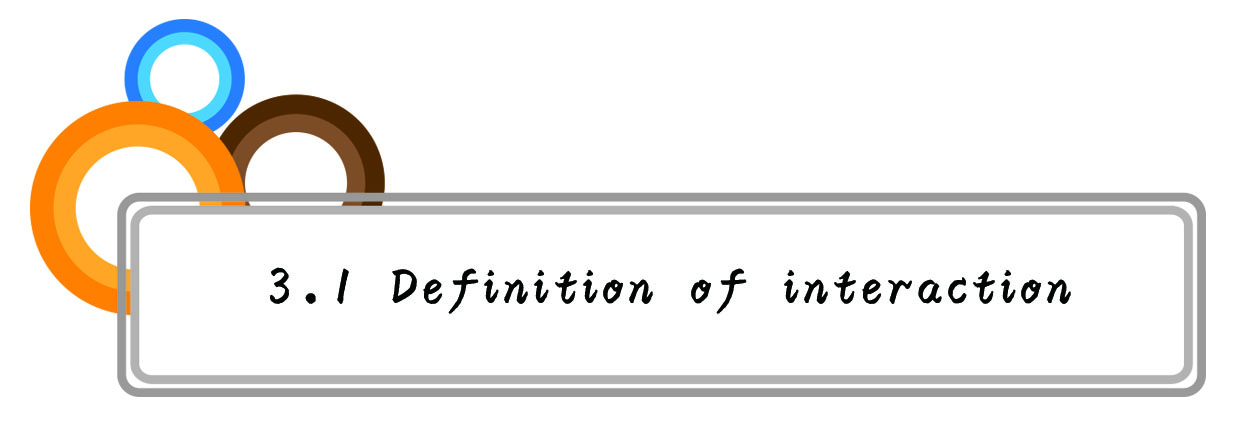
Interaction is the collaborative exchange of thoughts, feelings, or ideas between two or more people, resulting in a reciprocal effect on each other. A short classroom exchange has three main moves: initiation response feedback (IRF)
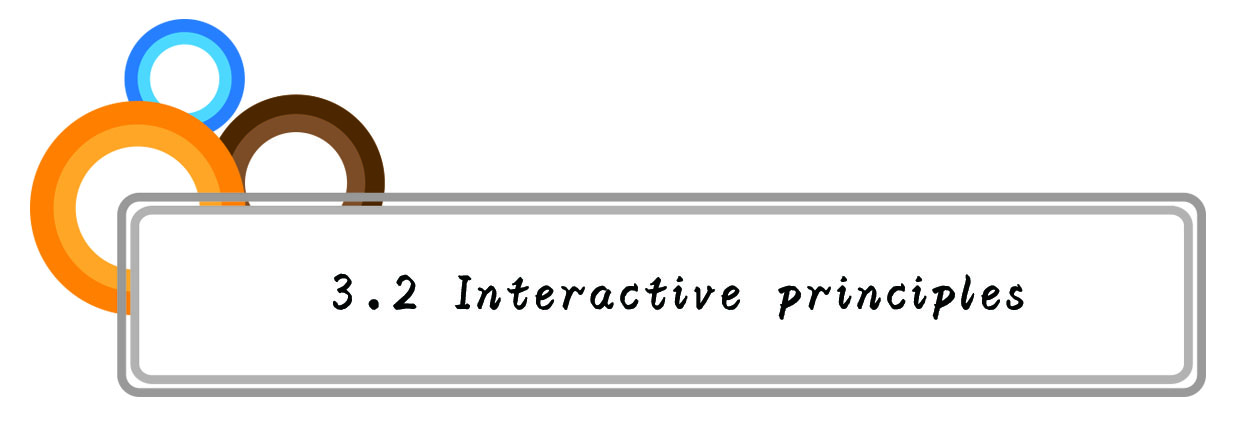
(1) Automaticity: true human interaction is best accomplished when focal attention is on meanings and massages and not on grammar and other linguistic forms.
(2) Intrinsic motivation: as students become engaged with each other in speech acts of fulfillment and self-actualization, their deepest drives are satisfied.
(3) Strategic investment: interaction requires the use of strategic language competence both to make certain decisions on how to say or writer or interpret language, and to make repairs when communication pathways are blocked.
(4) Willingness to communicate: interaction requires an attitude on the part of the learner that says, ‘I want to reach out to others and communicate’.
(5) The language–culture connection: the cultural loading of interactive speech as well as writing requires that interlocutors be thoroughly versed in the cultural nuances of language.
(6) Interlanguage: numerous errors of production and comprehension will be a part of this development. And the role of teacher feedback is crucial to the developmental process.
(7) Communicative competence: all of the elements of communicative competence are involved in human interaction. All aspects must work together for successful communication to take place.

Ss can be grouped into 4 forms:
(1) Whole-class teaching/ Class work
(2) Ss on their own/Individual work
(3) Pair work
(4) Group work
Table 14-1: Comparison each form of grouping students (adapted from Harmer, 2003: 114-8)
| Advantages | Disadvantages |
Whole- class teaching | (1) It reinforces a sense of belonging among the group members, something which we as teachers need to foster (e.g. give points of common reference to talk; share an emotion; create a much more engaging atmosphere); (2) It is suitable for activities where the T is acting as a controller, esp. good for giving explanations and instructions; (3) It allows teachers to ‘gauge the mood’of the class in general and get a general understanding of student progress; (4) Ss and teachers feel secure when the whole class is working in lockstep. | (1) It favours the group rather than the individual. Everyone is forced to do the same thing at the same time and at the same pace; (2) Individual Ss do not have much of a chance to say anything on their own; (3) Many Ss are disinclined to participate in front of the whole class since to do so brings with it the risk of public failure; 4) It may not encourage Ss to take responsibility for their own learning; It is not the best way to organize communicative language teaching or specifically task-based sequences. |
Ss on their own | (1) It allows teachers to respond to individual student differences in terms of pace of learning, learning styles, and preferences; (2) It is likely to be less stressful for Ss than performing in a whole-class setting or talking in pairs or groups; (3) It can develop learner autonomy and promote skills of self-reliance and investigation over teacher-dependence. It can be a way of restoring peace andtranquility to a noisy and chaotic situation. | (1) It does not help a class develop a sense of belonging. It does not encourage cooperation in which Ss may be able to help and motivate each other; (2)When combined with giving individual Ss different tasks, it means a great deal more thought and materials preparation than whole-class teaching involves. |
Pair work | (1) It dramatically increases the amount of speaking time any one student gets in the class; (2) It allows Ss to work and interact independently without the necessary guidance of the teacher; (3) It allows teachers time to work with one or two pairs while the other Ss continue working; (4) In promoting cooperation helps the classroom to become a more relaxed and friendly place; It is relatively quick and easy to organize. | (1) Pairwork is frequently very noisy and teachers in particular worry that they will lose control of their class; (2) The chances of ‘misbehaviour’ (taking about something else completely, often in their first language) are greater’ with pairwork than in a whole-class setting; (3) Many of Ss fee they would rather relate to the teacher as individuals than interact with another learner who may be just as linguistically weak as they are; They actual choice of paired partner can be problematic, especially if Ss find themselves working with someone they are not keen on. |
Group work | (1) It dramatically increases the amount of talking for individual Ss; (2) There is a greater chance of different opinions and varied contributions than in pair-work; (3) It encourages broader skills of cooperation and negotiation than pair-work, and yet is more private than work in front of the whole class; (4) It promotes learner autonomy by allowing Ss to make their own decisions in the group without being told what to do by the teacher; Some Ss can choose their level of participation more readily than in a whole-class or pair-work situation. | (1) It is likely to be noisy. Some teachers feel that they lose control; (2) Not all Ss enjoy it since they would prefer to be the focus of the teacher’s attention rather than working with their peers; (3) Individuals may fall into group roles that become fossilized, so that some are passive whereas others may dominate; Groups can take longer to organize than pairs, especially beginning and ending group-work activities where people move around the class can take time and be chaotic.; |
Therefore, we may decide when to put Ss in groups or pairs, when to teach the whole class, or when to let individual get on with it on their own will. Following factors should be considered:
(1) The task;
(2) Variety in a sequence;
(3) The mood.

Arends, R. I. & A. Kilcher. Teaching for student learning: Becoming an accomplished teacher [M]. New York & London: Routledge, 2010.
Brown, H. D. Teaching by principles: An interactive approach to language pedagogy (3rd ed.) [M]. Tsinghua University Press, 2013.
Cook, V. Second language learning and language teaching (4th ed.) [M]. Edward Arnold Ltd, 2008.
Harmer, J. The practice of English language teaching (3rd ed.) [M]. Pearson Education & World Affairs Press,2003.
王蔷. 英语教学法教程(第二版)[M]. 北京:高等教育出版社,2006.

Q1: Each form of getting Ss to work has its own limitations and strengths, how will you combine ways of grouping learners together?
Q2: How to create a beneficial environment of the classroom?
Q3: In which dimensions can we manage classroom well? How to utilize the teacher himself to manage the class?
Q4: How to interact with Ss better?




















